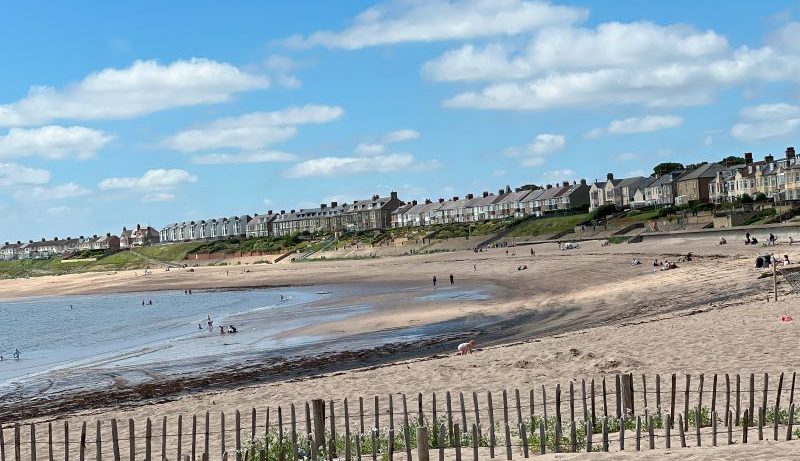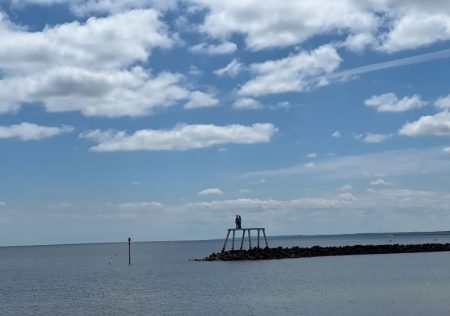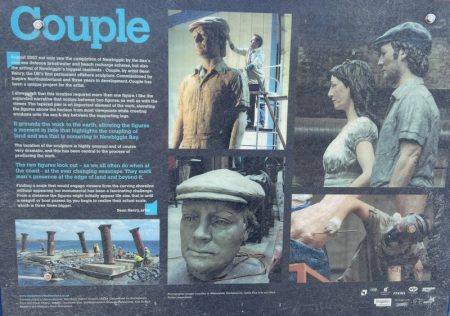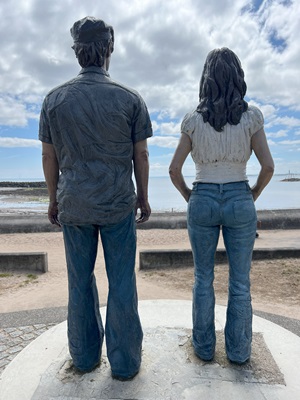A little seaside town located on the North Sea coast about 15 miles northeast of Newcastle, Newbiggin was once a busy shipping port, then a popular holiday destination, but now its prosperity relies mostly on fishing, pleasure boating and attracting tourists. An old oral tradition suggests that the village known apparently as South Wallerick was attacked by a band of Danes in AD 875 and destroyed. The rebuilt village was then renamed Neubegang, or Newbiginning, a symbol of its rebirth as a Danish settlement. However, on this occasion the old wives have got it wrong, perhaps confusing their own village with Alnmouth, also in Northumberland, that was once Newbiggin. Instead, the strongest onomastic evidence suggests that Newbiggin derives its name from the Old English ‘niwe’ (new) + ‘bigging’ (building) probably in reference to the extension of the early settlement from Woodhorn into what is now Newbiggin-by-the-Sea.
Newbiggin at the beginning…
There are two churches in the area that date back to the medieval period. The oldest is the . It has been suggested that Woodhorn is one of the oldest churches on the Northumbrian coast, with construction apparently begun around AD 700. On the other hand, the earliest evidence which can be ascribed a date with any real certainty comes in the form of two late Anglo-Saxon windows within the church itself that are from the early 11th century. Other parts of the church are made up of Norman and Gothic-style architectural designs. For example, the nave and west tower appear to be Pre-Conquest, the north aisle and the south aisle are Normanesque, whilst the chancel arch is of 13th century fabrication. Furthermore, sections of the church were rebuilt by father and son architect duo B. and J. Green of Newcastle in 1843.
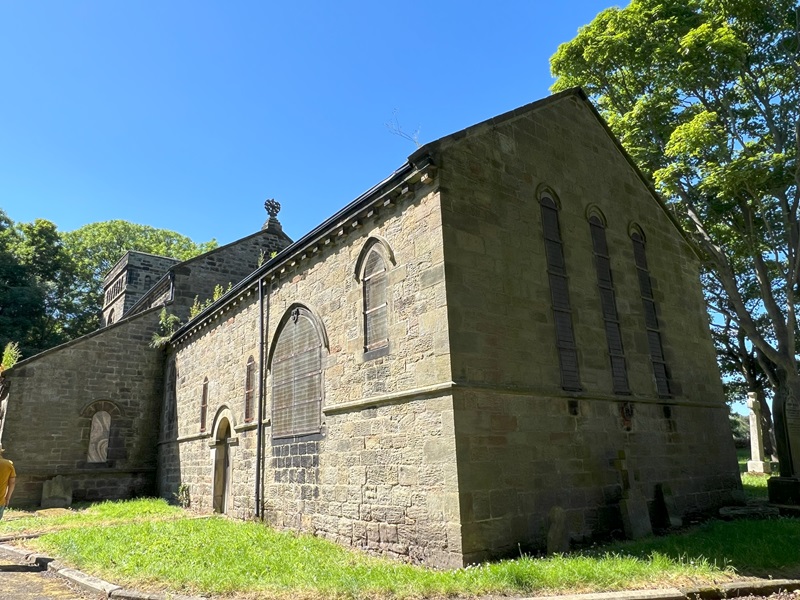
This beautiful example of amalgamated architectural styles is a unique time capsule of English history and thankfully when the building closed its doors as a church in 1973 the local council reopened the Church of St Mary the Virgin as a museum. One of the highlights that can still be seen on the museum’s Open Days are some fragments of the Woodhorn Cross. The Corpus of Anglo-Saxon Stone Sculpture records four fragments of an Anglo-Saxon cross shaft dating from the mid-10th to the mid-11th century some of which are displayed on the south wall of the chancel.
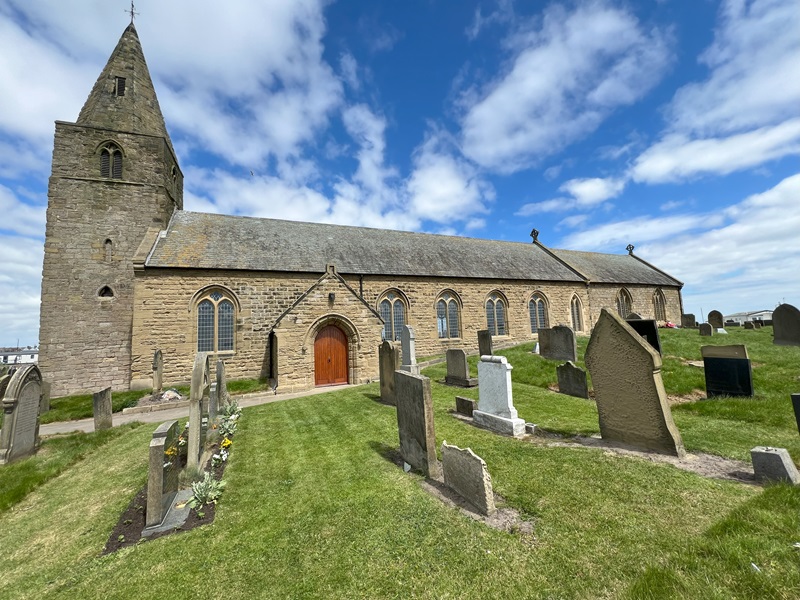
The younger of the two churches but certainly the most prominent is the Church of St Bartholomew. This church dominates the coastline at the eastern end of the village upon the sea cliff called Church Point. Here there is evidence to suggest the existence of a small Anglo-Saxon chapel on the site as early as the eleventh century. This would have been constructed by the monks of Lindisfarne as part of their network between Tynemouth, Whitby and the Holy Isle. However, the church that can be seen today was first constructed in the 13th century but by the 18th century it had become a ruin. Extensive restoration was undertaken in the 1840s and further conservation work completed in 1898 and 1912. By far the most exquisite of the renovations is the stained-glass east window, designed by Stanley Murray Scott. Despite the necessary rebuilding, eight complete medieval grave markers survived the test of time, discovered during the 1912 work and set into the north aisle wall for preservation. Older and perhaps even better preserved than the Kilmartin Churchyard slabs these markers are well worth the visit.
The first recorded charter afforded to Newbiggin-by-the-Sea is dated to 1204, this document permitted a fayre beginning on the eve of the feast of St Bartholomew and to last eight days. The charter also allowed for a weekly market to be held in the village. The principal goods sold at market were fish from off the coast, the earliest reference to which is a building and fishing boat owned by the monks of Newminster Abbey in the twelfth century. Newbiggin then became a maritime hub of fishing, but also the shipping of grain. Only London and Hull shipped more grain than Newbiggin-by-the-Sea. Such a booming port, Edward III called upon Newbiggin to aid him in his campaigns in Scotland to run supply lines up the coast to support his troops on the ground.
Industrious Times
Fishing reached its peak in Newbiggin between the mid-19th century and the beginning of the First World War, a time commonly referred to as the herring boom. In 1869, 142 Cobles or fishing vessels were recorded as sailing from Newbiggin. Today, the number is sadly just 4. Nevertheless, at the time the sea posed many great dangers to the hundreds of fisherman and life saving measures were required. Following a fishing disaster in which ten Newbiggin men were lost to the sea a lifeboat station was opened in 1851. In 1852 the Duke of Northumberland gifted to the station a 30ft self-righting lifeboat manned with 10 oars and named ‘Latimer”. The Latimer was housed in a boathouse which remains today as Newbiggin’s Lifeboat House, the oldest operational station in Britain. Over the course of its 173-year history Newbiggin’s lifeboat crews have been presented with 16 awards for gallantry.
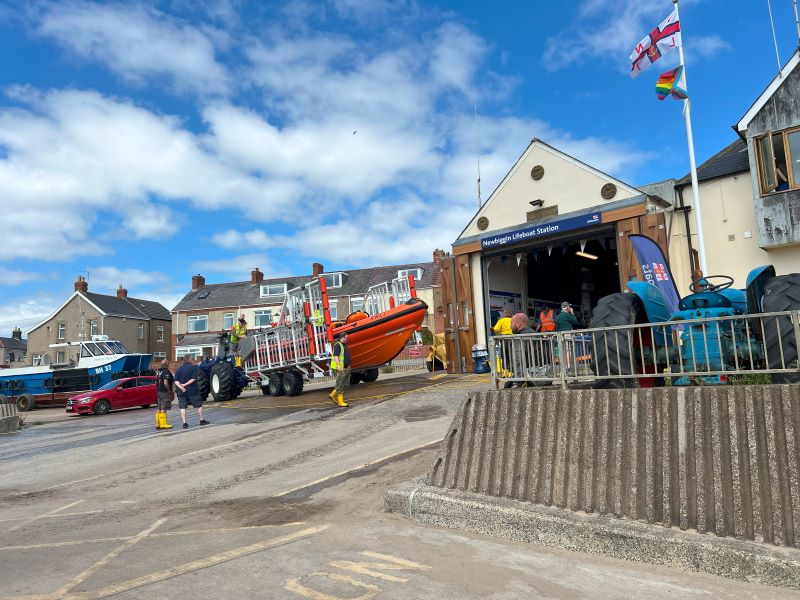
Lifeboat’s were not the only lifesaving measure deployed at Newbiggin either. In fact, Newbiggin was the second location in the whole of the United Kingdom to have a Rocket House, installed in 1866. If a ship ran aground, it was often difficult, if not impossible, to rescue the crew via a lifeboat. So, a new technology was developed whereby a rocket with attached lines were fired from somewhere along the shore to the ship in distress. The crew aboard the ship would then haul aboard a thick rope and prepare breeches buoys. These were like a pair of swimming trunks sewn into a life ring which enabled the Newbiggin Volunteer Life Saving Brigade to pull each man ashore.
Although Newbiggin’s economy had been based around its fishing industry, many of the working men pivoted to mining when a colliery was opened in 1910. The colliery was sunk in 1908 but faced many engineering problems in the process that delayed its opening for two years. By the 1940s, the colliery employed approximately 1400 men and was producing half a million tons of coal. Alas, the Newbiggin Colliery was closed in 1967 and the village suffered a decline due to the lack of industry and the damage done to the beaches caused by excessive mining.
Newbiggin-by-the-Sea was also home to the first telegraph cable to Scandinavia. In 1868, a telegraph line laid from Jutland, Denmark came ashore at Newbiggin’s Cable House which is situated beside the Lifeboat House and can still be seen from the outside today. Several cables were laid between Newbiggin and Scandinavia including to Sondervig, Denmark, and Mastrand, Sweden. In 1910, a further cable was laid from Arendal in Norway and a newspaper clipping reported:
“Off this village (Newbiggin) there arrived on October 24th last, the cable ship “Faraday,” commanded by Captain Gange, with over four hundred miles of cable on board, constructed by Messrs. Siemens Brothers, Ltd., and weighing approximately 3000 tons. The new cable, which will provide an additional telegraphic link between England and Norway, is the joint property of the British and Norwegian Governments.”
Overall, Newbiggin played an important role in Britain’s relationship with developments in telecommunications.
“We’re all going on a (Victorian) summer holiday!”
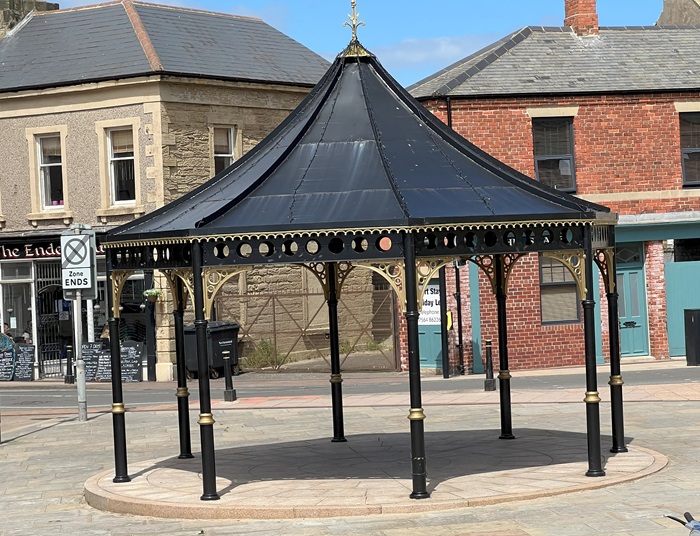
Newbiggin-by-the-Sea was a bustling summer seaside resort for the upper classes of Edwardian and Victorian Newcastle-upon-Tyne and Sunderland. The building of the railway in the 19th century and the construction of the village station brought holidaymakers in their droves. The town had many public houses, one of which had facilities akin to a modern-spa, in-stores and lodgings. Along the shoreline, a mile long beach perfect for bathing and enjoying the sunny season. Many prominent families chose to build summer homes and a promenade coupled with a bandstand and sun-huts were constructed between 1929 and 1932. Unfortunately, the decline of industry and the destruction and erosion of the picturesque beach brought an end to such merriment.
Protecting Newbiggin-from-the-Sea…
Great efforts were made in recent years to regenerate the village and restore its coastline to its former glory. In particular, there was a unique project to rebuild the beach using over 500,000 tons of imported from Skegness, in Lincolnshire. As part of this work a new breakwater was installed, decorated with a sculpture by Sean Henry that has become a popular phot op for tourists called “Couple”.
The “Land Couple” by Sean Henry is a smaller, land-based version of the larger “Couple” sculpture, featuring five-meter-tall figures of a man and woman positioned on the breakwater in Newbiggin Bay.
Moreover, after damage caused by a storm in 1984 the promenade was repaired, and improvements were made making it the longest promenade in Northumberland. In conclusion, Newbiggin-by-the-Sea is reclaiming its popularity as a tourist destination and remains a testament to the enduring appeal and historical significance of coastal towns in the UK.
Written by C. James McPherson MA MSc.
All photos: GBC – June 2024

